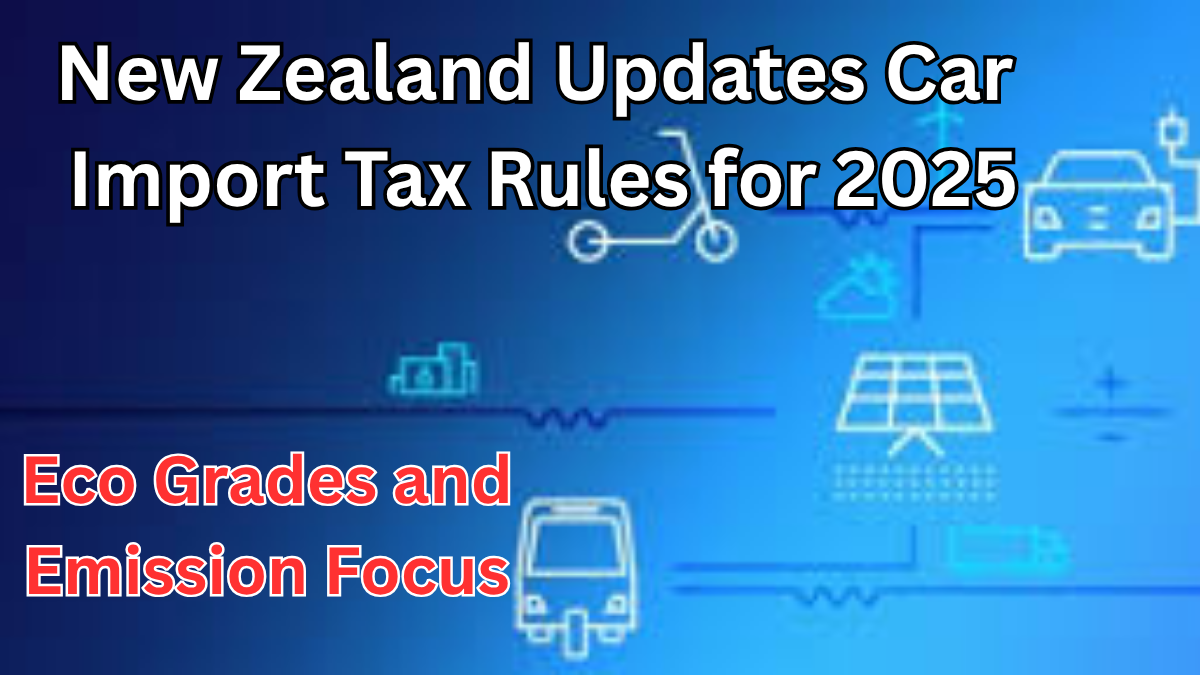As 2025 arrives, New Zealand has rolled out an updated car import tax framework that focuses on climate-conscious choices and sustainable transportation. If you’re importing a vehicle—new or used—understanding the NZ car import tax policy 2025 is essential. The government is encouraging low-emission vehicle imports through a new eco grading system and stricter tax regulations.

What’s New in the NZ Car Import Tax Policy 2025?
From January 1, 2025, all imported vehicles must meet a revised emissions-based assessment. A new eco grading system will determine tax rates, with cleaner vehicles receiving rebates and higher emitters paying more in taxes.
Key Updates:
-
Eco grading introduced: Vehicles graded from A+ to E based on emissions
-
Import tax now linked to emission performance
-
The used vehicle import rule now includes stricter compliance requirements
-
Incentives offered for hybrids and electric vehicles (EVs)
Eco Grading Explained
Vehicles are now categorized based on their CO₂ output. The lower the emissions, the better the grade—and the more you save.
| Eco Grade | Emission Range (CO₂/km) | Tax Adjustment | Recommended For |
|---|---|---|---|
| A+ | 0 – 50 | High rebate | Electric/zero-emission vehicles |
| A | 51 – 100 | Moderate rebate | Plug-in hybrids |
| B | 101 – 150 | Neutral | Efficient petrol/hybrids |
| C | 151 – 200 | Mild surcharge | Older petrol/diesel cars |
| D | 201 – 250 | High surcharge | High-consumption vehicles |
| E | 251+ | Maximum surcharge | Performance/luxury imports |
This table forms the heart of the NZ car import tax policy 2025, creating a pricing structure that encourages sustainable choices.
Used Vehicle Import Rule: Key Changes for 2025
The new regulations have tightened the rules around second-hand vehicles.
What You Need to Know:
-
Vehicles must now pass an eco grading inspection before being cleared at customs
-
CO₂ thresholds for used imports are stricter than previous years
-
High-emission used vehicles will be charged more under the updated policy
-
Exemptions may apply to vintage or classic cars (typically over 20–30 years old)
These changes ensure that the used vehicle import rule aligns with New Zealand’s climate goals.
Impact on Buyers and Importers
For Dealers:
-
Shift your inventory focus to hybrids and EVs
-
Prepare for increased compliance paperwork and grading fees
For Individual Buyers:
-
Check a vehicle’s CO₂ rating before purchasing or shipping
-
Explore low-emission options to reduce tax burden and running costs
FAQs
Q1. What is the goal of the 2025 car import tax update?
The main goal is to lower New Zealand’s carbon emissions by incentivizing the import of low-emission vehicles and discouraging high-emission options through taxes.
Q2. Are used vehicles affected by this policy?
Yes, the used vehicle import rule now requires all second-hand imports to be assessed and graded for emissions. Those with poor eco grades will face higher import taxes.
Q3. Can I still import a high-emission vehicle?
Yes, but you’ll pay a significantly higher surcharge. Vehicles rated D or E will attract the highest import fees under the new eco grading system.
Q4. How can I check a vehicle’s eco grade?
You can refer to manufacturer specifications, online CO₂ rating tools, or use a New Zealand-based import agency that offers pre-import assessments.
Final Thoughts
The updated NZ car import tax policy 2025 marks a turning point in New Zealand’s efforts to build a cleaner transport future. By tying taxes directly to eco grading, the government is not only regulating imports but also guiding buyers toward smarter, greener choices.
Whether you’re a dealer or a private buyer, understanding the new rules is essential. Start planning your next vehicle import with emissions and compliance at the forefront.
Click here to learn more
